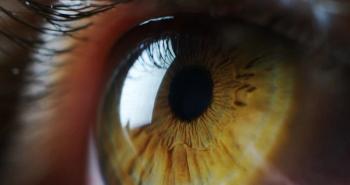
Real-World Luxturna Data Shows Good Efficacy, New Adverse Reaction in Retinal Dystrophy
Investigators presented up to 2 years of post-marketing data on the first-ever gene therapy.
Findings from the ongoing PERCEIVE study demonstrate continued safety and efficacy of voretigene neparvovec (Luxturna; Spark Therapeutics) in patients with RPE65-mediated inherited retinal dystrophy in the real-world setting.1
The findings, which included up to 2 years of data and were presented at the Association for Research in Vision and Ophthalmology (ARVO) 2022 Annual Meeting, also shed light on a new treatment-related adverse reaction.
Approved by the FDA in 20172 and the European Commission in 2018, voretigene neparvovec was the first directly administered adeno-associated virus gene therapy to gain approval and the first approved ocular gene therapy. Intended to treat children and adults with confirmed biallelic RPE65 mutation-associated retinal dystrophy that leads to vision loss and blindness, the therapy delivers a functional copy of the RPE65 gene directly to retinal cells to restore normal protein production, ultimately restoring a patient’s vision.
The therapy’s safety and efficacy was established in 2 phase 1 clinical trials and an open-label, randomized phase 3 trial,3 in which a statistically significant and clinically meaningful difference was observed in the primary end point, mean bilateral multi-luminance mobility testing score change, between the intervention group (n=21) and control group (n=10) at 1 year (difference of 1.6; 95% CI, 0.72, 2.41; P = .001). In addition, a statistically significant difference in 2 key secondary end points were observed, including full-field light sensitivity threshold testing averaged over both eyes (P = .001) and the mobility test score change for the first injected eye (P = .001). A third secondary endpoint, change in visual acuity averaged over both eyes, was not statistically significant between the groups.
Launched in 2019, the post-marketing PERCEIVE trial follows patients for up to 5 years. As of the August 2021 data cutoff, 106 patients were enrolled and 103 received treatment with the gene therapy (mean age, 19.5 years; 50.5% female; mean duration of follow-up, 0.8 years [max, 2.3 years]). Among the group, 35% experienced at least 1 ocular adverse event (AE), including 13 instances of chorioretinal atrophic changes at the injection site or elsewhere, which were the most common AE.
Ocular AEs of special interest included foveal degeneration (n = 4), vitritis (n = 4), eye inflammation (n = 3), retinal tear (n = 2), and increased intraocular pressure (n = 5). Two serious AEs, eye inflammation and increased intraocular pressure, were reported by 1 patient each. The most frequent nonocular AE was headache. Notably, 1 patient with no prior history of mental illness, reported 3 instances of a psychiatric disorder.
In terms of efficacy, visual function improved in terms of full-field light sensitivity threshold,and best-corrected visual acuity (LogMAR) at year 2 with a mean change from baseline of −13.67 decibels and −0.03, respectively.
“Overall, the safety and effectiveness of [voretigeneneparvovec] observed in the PERCEIVE study, with up to 2-years data, are consistent with the findings of [voretigeneneparvovec] clinical trials,” the investigators concluded.
REFERENCES
1. Fischer MD, Maier R, Suhner A, et al. PERCEIVE study report: Real-world safety and effectiveness of voretigeneneparvovec. Presented at: Association for Research in Vision and Ophthalmology (ARVO) 2022 Annual Meeting. May 1-4, 2022; Denver, CO.
2. FDA approves novel gene therapy to treat patients with a rare form of inherited vision loss. News release. US FDA. December 17, 2018. https://www.fda.gov/news-events/press-announcements/fda-approves-novel-gene-therapy-treat-patients-rare-form-inherited-vision-loss#:~:text=The%20U.S.%20Food%20and%20Drug,that%20may%20result%20in%20blindness
3. Russell S, Bennett J, Wellman JA, et al. Efficacy and safety of voretigeneneparvovec (AAV2-hRPE65v2) in patients with RPE65 -mediated inherited retinal dystrophy: a randomised, controlled, open-label, phase 3 trial. The Lancet. 2017;390(10097):849-860. doi:10.1016/S0140-6736(17)31868-8
Newsletter
Stay at the forefront of cutting-edge science with CGT—your direct line to expert insights, breakthrough data, and real-time coverage of the latest advancements in cell and gene therapy.












































